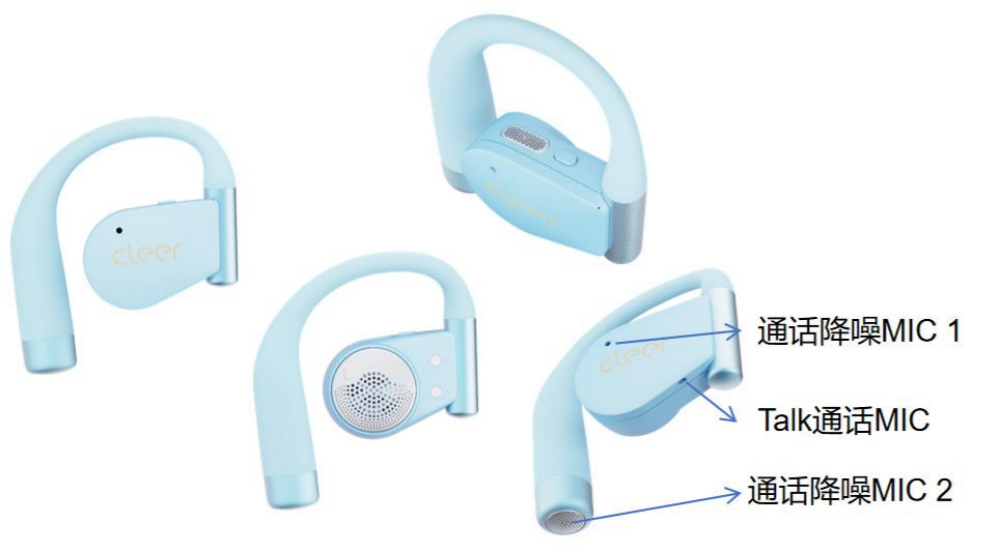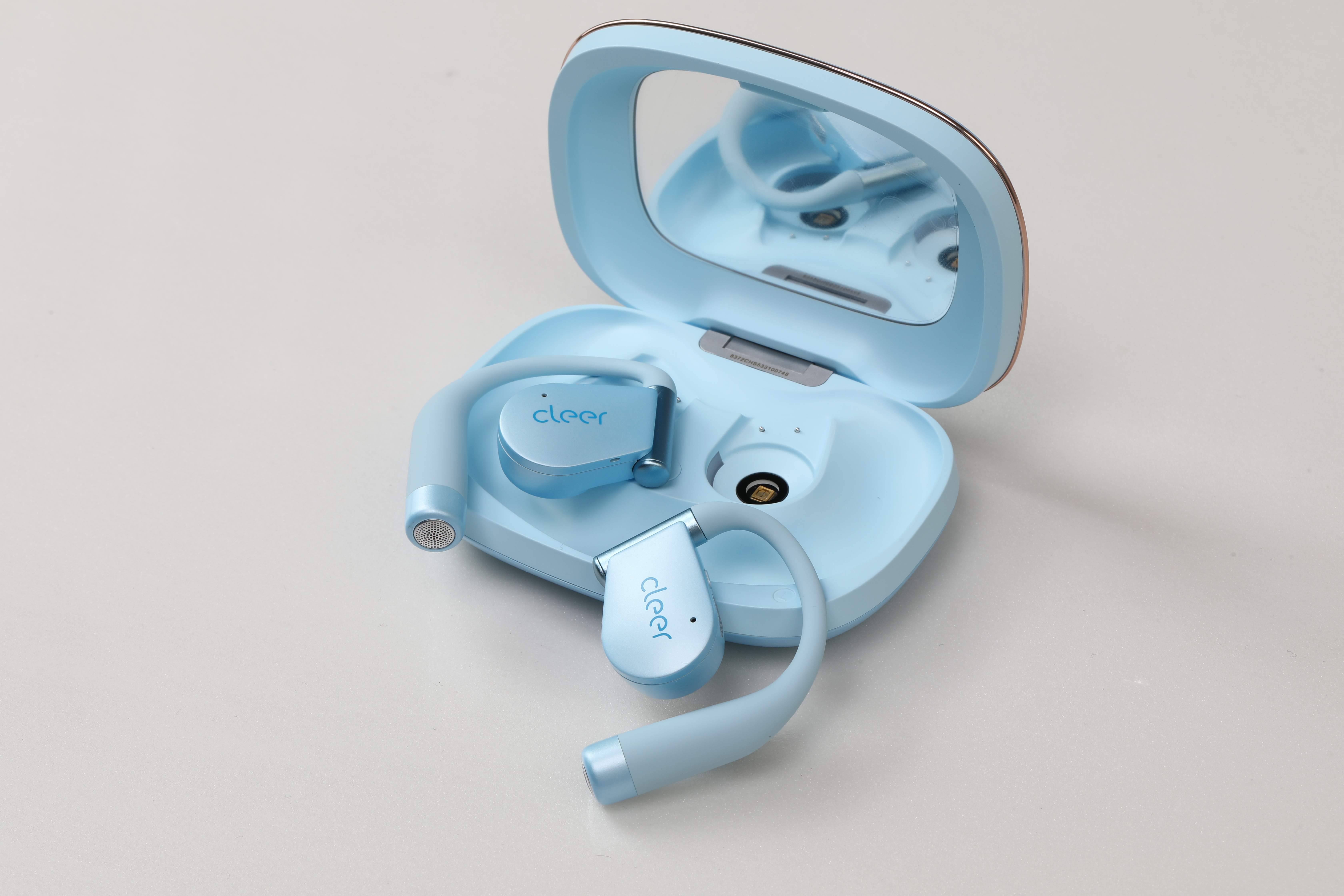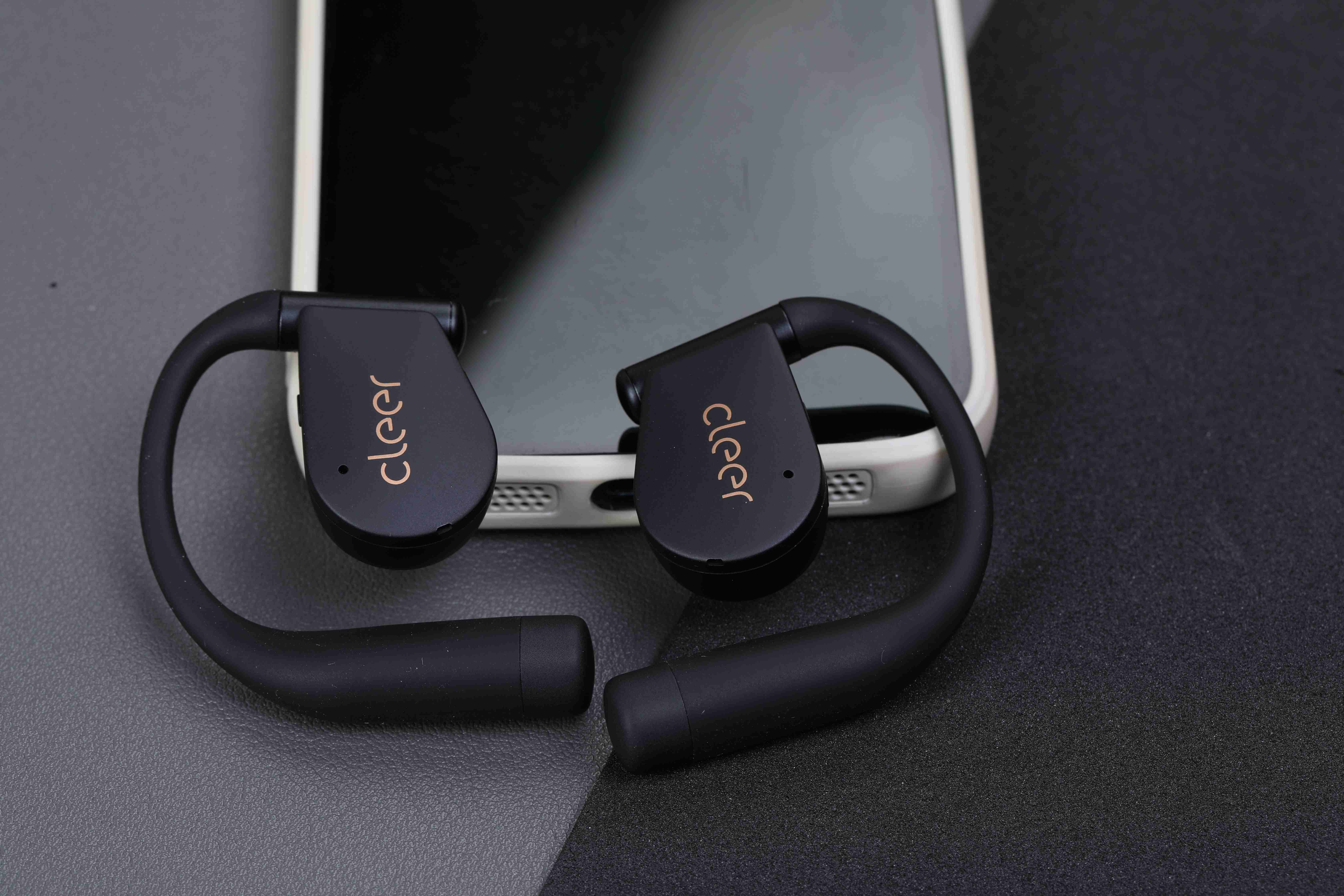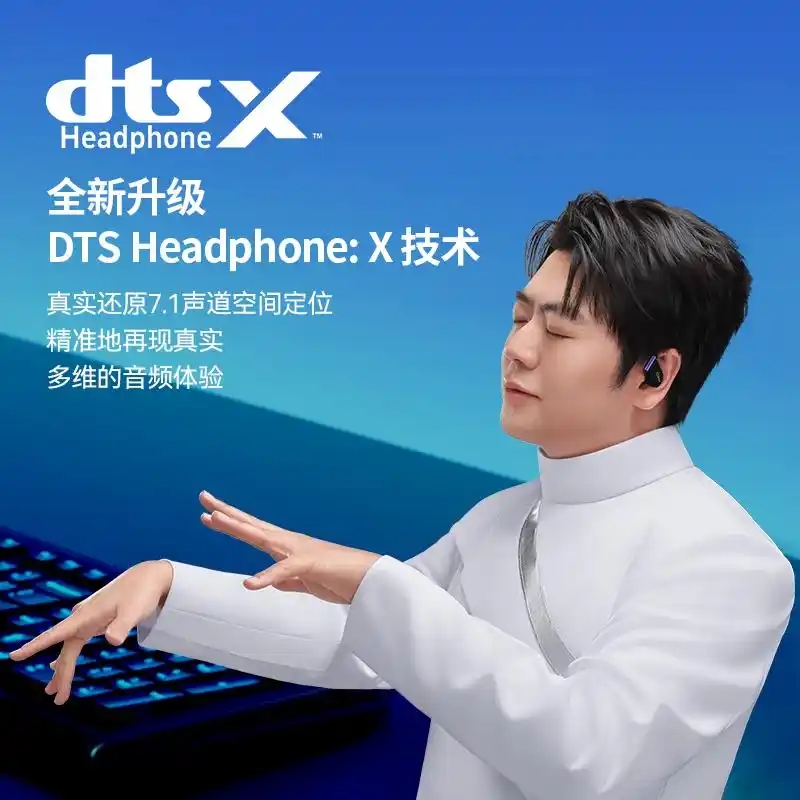2025-10-18 14:14:00
The Double 11 front line has been launched ahead of schedule again. This year, not only e-commerce is experiencing internal competition, but even headphones are starting to 'roll' into the algorithm layer.
The most noteworthy aspect of the headphone industry this year is not the price reduction, but the evolution of "noise reduction methods".
In the past, headphones were like two distinct streams - on one side was the closed noise cancelling faction, quiet enough to hear a heartbeat, but once worn for a long time, the "ear pressure" would explode; On the other side is an open and liberal style, comfortable and breathable to wear, but dominated by wind noise and environmental sounds.
But Cleer has directly "connected the Ren and Du meridians" this time, launching three new products that sweep the AI noise reduction black technology, namely: Cleer ARC 5 Sound Arc Riding Edition, Cleer ARC 5 Sound Arc Noise Reduction Edition, and Cleer ARC 5 Sound Arc Game Plus Edition. Three new products are aimed at the three high-frequency life scenarios of cycling, commuting, and esports, transforming open earphones from "listening to a sound" to a more precise, intelligent, and immersive presence.
Next, let's take a closer look: Are these three headphones really "blowing so well"? Speak with actual test data to help you accurately identify the most worthwhile "headphone artifact" to purchase during Double 11.
To be honest, as someone who enjoys cycling while making phone calls, I have always been dominated by wind noise. When the wind blows, the headphones and microphone are filled with "whooshing" sounds. Not to mention conversations, the person on the other end is not listening to human voices, but rather a hurricane.
That's also why most open earphones on the market are almost helpless in cycling scenarios. Wind noise is a random signal generated by air friction. It is not a stable frequency noise, but a complex, variable, and randomly perturbed noise. The noise reduction algorithm of ordinary headphones tends to suppress low-frequency noise (such as subway roars and air conditioning buzzes). Once encountering high-speed airflow, the algorithm will "misjudge the target", not only failing to reduce it, but also weakening the voice signal.
The cycling version released by Cleer this time is truly targeted. It simultaneously focuses on microphone layout, algorithm computing power, and physical structure, redefining the three words "anti wind noise" with a complete system level solution.
Firstly, the exclusive design of 3 microphone arrays. Unlike most headphones that only use a single microphone for beamforming, Cleer adopts a front, back, and inner three-way pickup layout in the ARC 5 cycling version, responsible for capturing human voice, ambient sound, and wind noise respectively. The AI anti wind noise algorithm is an "intelligent commander" that can analyze in real time which ones are human voices and which ones are wind noise to be eliminated, with more than one level of accuracy higher than ordinary algorithms.
Finally, there is a seemingly low-key but crucial sandwich like physical structure. This is a three-layer acoustic protection system optimized by the Cleer engineering team for the airflow characteristics during cycling. The system consists of two layers of transparent mesh fabric sandwiching porous acoustic resistance sponge. This structure is like installing an "airflow cushion" on a microphone diaphragm, which can attenuate the impact airflow and reduce wind noise interference from the source. In this way, the signals obtained by AI algorithms are purer, and the efficiency of extracting human voices and enhancing call clarity is directly maximized.
Data won't deceive: Maintaining a cycling speed of 25km/h in a windless environment, the Cleer ARC 5 cycling version can reduce wind noise interference by up to -30dB. That is to say, when you are commuting and cycling at a fast speed in the city, the wind is howling, but the other end of the headphones can still hear every word you say clearly.
In terms of riding comfort, it still maintains the traditional strengths of Cleer open earphones: the lightweight open structure keeps both ears transparent at all times, without pressing or stuffiness; Combined with IPX7 waterproof, it can handle long-distance cycling with sweat and sudden showers with stability!
In this autumn and winter cycling craze returning during the Double 11 season, many people are preparing to buy a pair of "wind resistant and sweat resistant" cycling headphones. The appearance of the Cleer ARC 5 cycling version has just filled the gap in wind noise that open headphones have always had. This is a "must-have" artifact for commuters, food delivery riders, and outdoor cycling enthusiasts.
To be honest, when I first heard the words' open noise cancelling headphones', I had doubts in my heart.
Open and noise reduction? These two words together sound a bit like "quiet electronic music" or "low-key rock" - theoretically contradictory, but Cleer firmly established it.
After all, in traditional acoustic logic, "noise reduction" relies on enclosure: isolating environmental sound through physical sealing, and then using reverse sound waves to cancel out noise. Open headphones, on the other hand, are naturally breathable, allowing wind, vocals, and background sounds to penetrate. To achieve effective active noise reduction in this structure, it is necessary to significantly increase the microphone gain to "hear" external noise clearly. However, the problem is that once the gain is large, the headphones are prone to whistling. That kind of "squeak -" high-frequency piercing sound is a nightmare for all audio engineers. That's why for many years, the open headphone jack has been default - noise reduction is exclusive to closed headphones.
But Cleer chose to turn this impossible question into an "industry sample". The ARC 5 noise reduction version adopts a completely self-developed open active noise reduction system, equipped with high-performance AI chips, which can capture and analyze environmental noise signals in real time at a 768kHz ultra-high sampling rate, and then accurately adjust noise reduction parameters through AI dynamic filtering algorithms.
Simply put, it comes with a small AI brain that can determine which sounds are "noise that needs to be blocked" and which sounds are "environmental sounds you still want to hear", and dynamically adjust them to achieve -15dB intelligent noise reduction without sacrificing comfort or producing whistling, achieving both quietness and naturalness.
For example, in the subway, it can actively reduce background noise and make the music cleaner; Walking on the street, the sound of cars can still be perceived, without any dangerous "auditory blind spots". You will find that it does not "mute" the world, but helps you "tune" - like adding a low-frequency noise filter to life, quiet and not isolated.
DTS、THX、 Dolby - these three top-level sound certification, originally only existed in high-end cinemas and professional audio equipment, but Cleer surprisingly stuffed them all into a pair of open headphones. Especially DTS spatial audio, which is the world's first application in open headphones.
Although this is an "open design", the sense of presence in the sound is no less than that of a closed design. The THX spatial audio brings a sense of realism in terms of 'hearing direction', allowing for a clear perception of whether footsteps are approaching from the left rear or jumping down from the top. DTS surround sound is responsible for restoring the depth and spatial hierarchy of the sound field, making the game no longer a "flat sound", but a three-dimensional battlefield that can be looked around. And the dynamic processing of Dolby Atmos, including explosions, wind sounds, and gunshots, each sound effect is "carved" perfectly, with both intensity and non harshness.
Even more surprising is the reduction in latency. With the support of AI low latency engine, the ARC 5 Game Plus version can achieve latency as low as 29ms (<0.03s), almost achieving "sound and picture synchronization". Compared to the commonly used "low latency" Bluetooth earphones on the market with a delay of over 60ms, Cleer's advantage lies in not only low latency, but also the ability to retain complete spatial sound information. Ordinary headphones sacrifice details in compressed data transmission, but Cleer uses self-developed dynamic optimization algorithms to achieve both high fidelity and low latency simultaneously. In FPS games, the moment you hear footsteps, the enemy just enters the field of view; In music rhythm games, every beat of tapping and striking is steadily matched.
Double 11 is the best time for gamers to change their equipment, and the Cleer ARC 5 Gaming Plus version brings an "esports level listening experience" to open headphones for the first time, making every team battle faster and more immersive. This year's battlefield is not only in the game, but also in the headphone soundstage.(1).png)
From cycling to office commuting, and then to esports, Cleer's new product has beautifully combined "AI+acoustics": it retains the comfort and freedom of open headphones while accurately addressing the shortcomings of "wind noise, environmental noise, latency, and immersion", creating a win-win situation for both technology and experience.
This year's Singles' Day, if you only plan to buy one pair of headphones - then the three new products of Cleer ARC 5 are definitely worth carefully choosing. Cleer offers not just a pair of headphones, but a complete set of intelligent auditory systems for different scenarios, pain points, and solutions.
At present, the double 11 limited time benefits of Cleer Tiktok's official live broadcast room have been opened! Exclusive discounts for new products, limited edition customized gift boxes, and exclusive premium gifts are all available there. Let's reduce noise in life together and let good sounds enter our ears first.